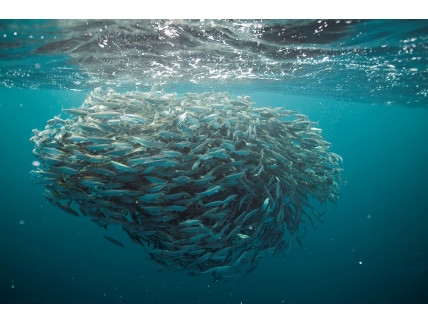Revealed: The genes that affect spawning season in herring
It is very important for all animals to reproduce at the time of year which gives their progeny the best chance of surviving. A new study, which compares DNA from 25 herring populations on both sides of the North Atlantic, reveals a number of genes associated with the timing of reproduction. The gene variants associated with spring or autumn spawning were found to be largely shared between populations on both sides of the Atlantic.
The study was conducted by researchers at Uppsala University, Stockholm University and Dalhousie University (Halifax).
The researchers compared spring and autumn spawning herring from the west and east side of the North Atlantic (including the Baltic Sea) to investigate genetic factors affecting which time of year the herring spawns.
The study reveals that herring populations across the entire Atlantic Ocean are remarkably similar genetically, suggesting that there is gene flow between herring populations. Despite this, the researchers identified clear genetic differences between spring and autumn spawning populations on both the east and west side of the North Atlantic. To a large extent, the genetic factors associated with spawning time were shared between geographically distant populations.
“We now have a long list of genes associated with timing of reproduction in the herring and there are some that appear particularly important,” says Leif Andersson, Professor at Uppsala University, the Swedish University of Agricultural Sciences and Texas A&M University, who led the study.
Reproducing at the right time of year
One of the most interesting genes is TSHR (thyroid-stimulating hormone receptor). Previous studies of birds and mammals have indicated that this gene has a key role in how animals detect changes in day length, ‘knowing’ when it is time to reproduce – for instance during spring for most Swedish bird species.
“The fact that TSHR was the gene that showed the most consistent association with spawning time in the herring suggests that it has a similar role in fish. An important topic for future research is to reveal the molecular mechanism of how increasing day length leads to the initiation of spawning in spring spawners, whereas this response is delayed until August–September for autumn spawners,” concludes Leif Andersson.
Well-equipped for climate change
The study has significant implications for how climate change may affect the reproduction of herring and other marine fishes. It has already been observed in some birds that there is a mismatch between their reproduction and the peak of insect abundance due to a warmer climate (earlier spring).
“We think that the Atlantic herring has a capacity to respond well to at least moderate changes in the climate,” says Angela Fuentes-Pardo (Dalhousie University, Canada), PhD student and shared first author on the paper. “Firstly, herring show some plasticity and adjust spawning time according to the water temperature. Secondly, our data suggest that there is a considerable amount of genetic variation affecting spawning time so the herring should be able to adapt genetically to moderate climate changes.”
For sustainable fishery
The study also has important implications for fishery management of the Atlantic herring. In order to sustainably manage the incredibly important natural resource that herring constitutes it is of key importance to be able to follow the development of the different herring populations.
“By providing genetic markers that distinguish spring and autumn spawning herring outside the breeding season, a more sustainable fishery can be developed by optimising fishing among stocks according to their abundance,” explains Professor Daniel Ruzzante (Dalhousie University, Canada), one of the senior authors of the study.
Herring facts
- The Atlantic herring is one of the most abundant fish in the world and has been a crucial food resource in Northern Europe.
- Commercial herring fishery is the fifth largest in the world.
- One school of herring can consist of a billion fishes.
- Herring spawns during spring, summer or autumn. This constitutes different strategies for a successful reproduction. Which strategy is the most successful varies from year to year and over longer time periods due to how the climate affecs plankton production, which the herring depends on.
- At the beginning of the 1900s autumn spawning was dominant in the Baltic Sea but today spring spawning is more common, perhaps due to over-fertilisation causing increased plankton production.
Full article: Sangeet Lamichhaney, Angela P. Fuentes-Pardo, Nima Rafati, Nils Ryman, Gregory R. McCracken, Christina Bourne, Rabindra Singh, Daniel E. Ruzzante, and Leif Andersson (2017) Parallel adaptive evolution of geographically distant herring populations on both sides of the North Atlantic Ocean, PNAS
Doi: 10.1073/pnas.1617728114
Linda Koffmar

